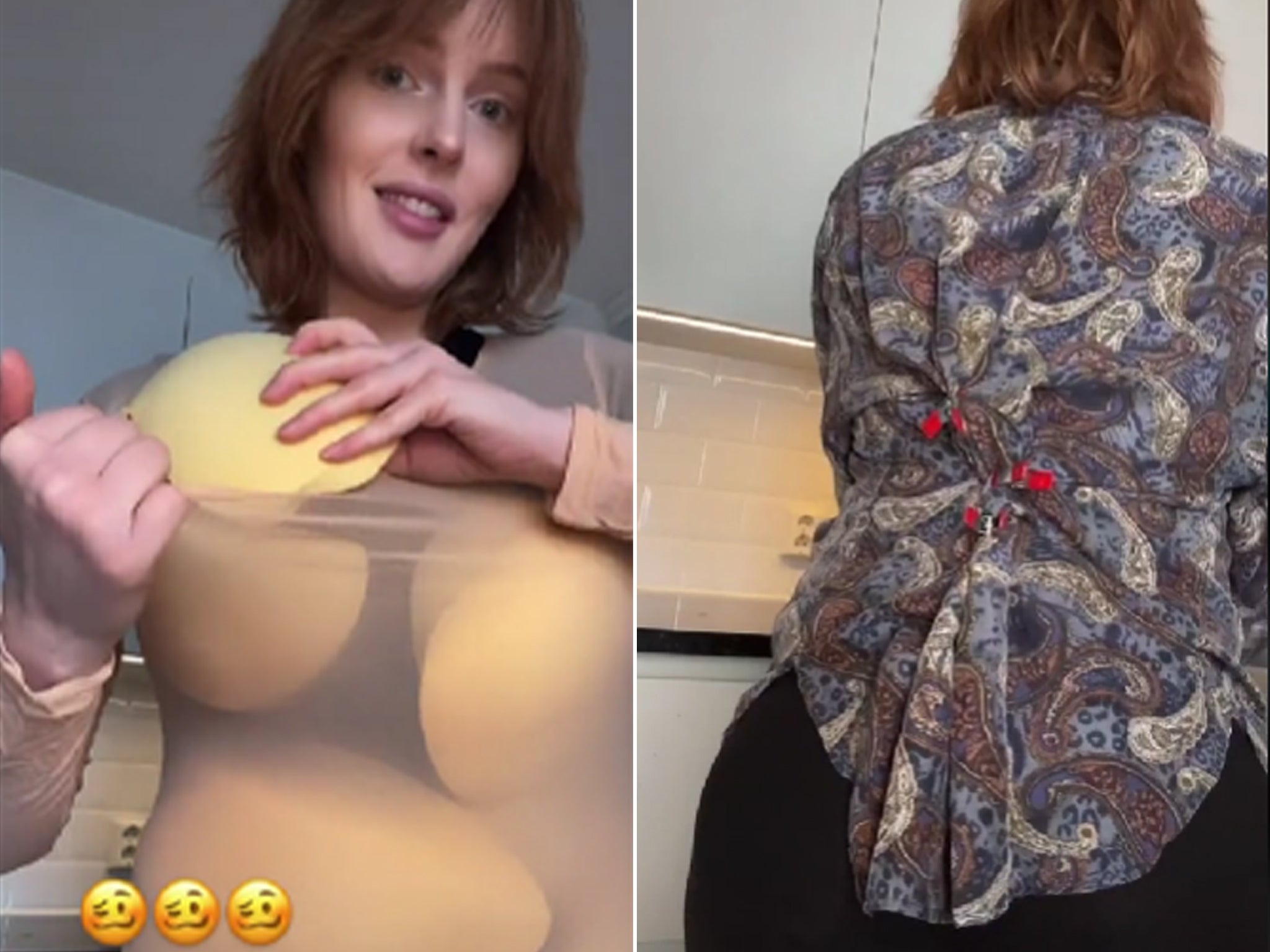Plus-size model claims fashion industry puts ‘slim models in fat suits’ in viral TikTok
Video by Karoline Bjornelykke made some viewers realise why they are ‘self-conscious’ about their face shape

A plus-size model has sparked outrage after she shared a fashion industry “secret” on TikTok.
Norwegian model Karoline Bjornelykke, whose TikTok username is @coolquinn, posted a video explaining that she is sometimes expected to wear “padding” in order to appear in ads wearing clothes larger than her size.
Bjornelykke, 25, is considered a plus-size model despite wearing size 10/12 (EU38/40), between two to three sizes smaller than the average British woman, whose dress size is 16.
But she is sometimes booked by brands that carry clothing sizes 16 and up, she says in the video.
“If you have eyes, you can see that I’m not that size,” the red-headed model says. “So, how do we fix this?”
She then shows viewers a bag filled with “padding work”, which she describes as a “fat suit in pieces”, and explains that she is expected to bring the pieces in for photoshoots with larger clothing sizes.
Bjornelykke demonstrates how she stuffs the padding into a skin-coloured mesh suit that is worn under the clothes she models, which makes her “look a lot bigger”.
But if that isn’t enough, she continues, stylists will pin the clothing in the back to make it appear more fitted.
“So if the clothes look really good from the front, they probably look like s*** in the back,” she adds.
Explaining why this is the industry’s practice, Bjornelykke explains: “It’s because [brands] want the neck and the face to look really slim and sharp, which doesn’t just create unrealistic standards, but impossible ones.”
She ends the video by suggesting brands use genuinely plus-size models for their photoshoots because “there are so many gorgeous plus-size women out there”.
The video, which has been viewed nearly 480,000 times on the app, was a revelation for some of the model’s fans, while others expressed anger and disappointment at the fashion industry.
“I just realised how many times I have fallen for this, being ashamed of my double chin,” admitted one person, while another added: “Jesus Christ, this is why I’m so self-conscious about my face shape.”
Another person commented that the industry “really hates plus-size models.” A fourth person said: “This is so sad. We are definitely not there yet when it comes to representation in that industry.”
However, some people blamed Bjornelykke and models like her for agreeing to take the jobs in the first place, accusing her of “contributing to the issue”.
Bjornelykke explained that when she was first signed with a modelling agency in New York, it was a contractual obligation to do such shoots. However, she no longer agrees to them because she believes “it’s ethically wrong and [I] don’t desperately need the money”.
“But I don’t think it’s right to blame the models, if one model refuses the job another one just like her will take it,” she added.
“There is no way all models will collectively refuse these jobs. The real power is with the consumers (that’s why I made this video, so that consumers can make better choices), designers and casting directors.
“Models are at the bottom of the power pyramid.”
Join our commenting forum
Join thought-provoking conversations, follow other Independent readers and see their replies
Comments
Bookmark popover
Removed from bookmarks